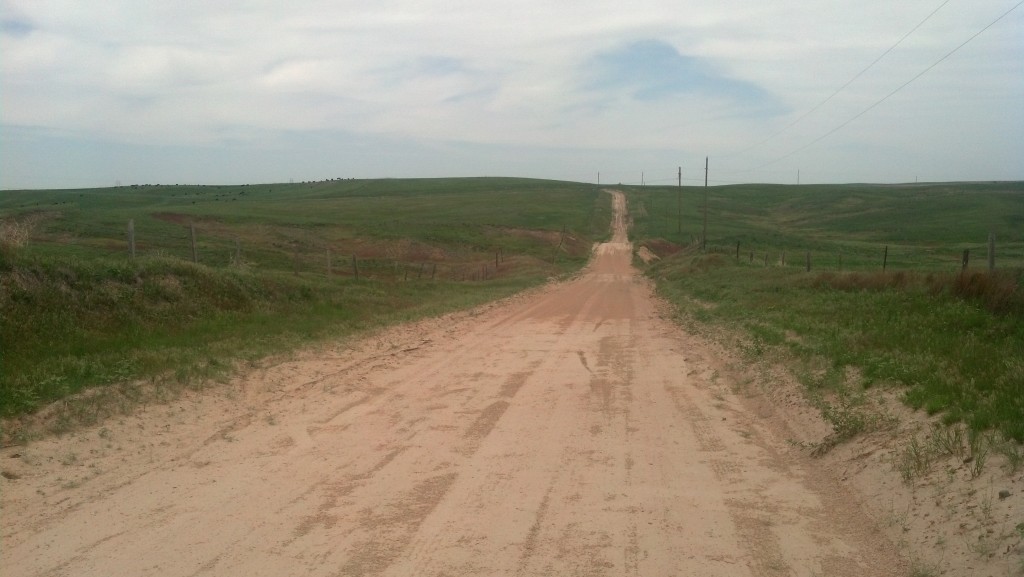
California Hill, near modern-day Brule, Neb., is where many westward settlers encountered their first large climb from the Platte River valley to higher terrain. (Photo by Michael E. Grass)
BRULE, Neb. — It may not look like much, but the beautifully rolling topography wedged between the Platte River’s north and south forks was one of the first big endurance tests for any westward-bound emigrant.
This is California Hill, the place where thousands of wagons carrying settlers and supplies bound for California, Oregon and other points westward encountered their first major uphill climb. There certainly aren’t any major mountains here, but as central Nebraska pushes into western Nebraska, a gradual change in topography is noticeable. In this case, a big hill is still a big hill, especially when the previous few hundred miles have been absolutely flat.
Most westward emigrants heading through Nebraska would stick to the south side of the Platte River. (Many Mormons traveled along the north side of the river.) Near modern-day North Platte, the city that’s home to the Buffalo Bill Ranch, the river forks into two branches: The South Platte continues to the southwest into northeastern Colorado and onward to Denver while the North Platte continues in a northwesterly direction toward east-central Wyoming and, eventually, South Pass, the all-important crossing of the Rocky Mountains.
At California Crossing, emigrants would ford the South Platte, trudge up California Hill toward the north and northwest and later connect with the North Platte. This territory is apparently full of old emigrant wagon ruts.
I was on the lookout for these remainders from the former overland trails, but couldn’t pinpoint any within view of the dirt road I drove up from U.S. 30 to reach this beautiful and peaceful windblown spot.
Post continues below …
For his 2001 book Wither Thou Goest, author Patrick Simpson visited California Hill as part of his journey following his ancestors’ 1878 trek westward. He had some trouble at California Hill, just like me:
We drove up California Hill to the same view of the South Platte seen by countless pioneers. I had read that the finest Oregon Trail ruts still remaining were out that dirt road. We found the trail but not the wagon ruts. To get to them I had to walk out into a field full of cattle. Two of them were bulls and one of them was so enraged by my presence, he began snorting and throwing dust over his massive back.
I didn’t want to venture onto private land to find the wagon ruts like Simpson did but I was able to get a good feeling for the importance of this place. This is the location to fully appreciate just how vast North America is and realize how difficult it was for those who traversed this jaw-dropping landscape by foot, wagon or horseback.
***
Traveling west from Lexington toward North Platte and later, California Hill, there are hints of terrestrial transition. The edges of the Platte River valley begin to narrow slightly. These are Nebraska’s Sand Hills, a vast region of grass-covered dunes that sit atop the massive Ogallala Aquifer. The hills are somewhat taller and peek above the treeline off in the distance to the south. Iowa’s Loess Hills are more visually impressive, for sure, but after hundreds of miles of being in a flat valley, it’s an interesting change nonetheless.
As Pete Davies wrote in American Road, “the dune range edges closer to the road from the northern horizon, starting gently to buckle and roll the wide land.”
This is the first location along the very flat Platte River valley where there’s an indication that the topographical status quo begins to change. Davies also noted that this “is where cornfields fade out into cattle range, where the grain silos by the rail stations give way to stockyards.”
Post continues below …
Between Paxton and Ogallala, the odor will make this agricultural transition more than pronounced. That’s where Twin Valley Feeders is located. Its massive feed lots stretch for quite a distance alongside U.S. 30. It’s a good smell to clear out the lungs, I suppose.
Continuing westward, it feels a bit more desolate. The signs of civilization are farther apart. It seems less like the Midwest and more and more like the West.
In Roscoe, which is practically a ghost town, an abandoned gas station stares out onto the Lincoln Highway. There’s nothing to stop for here. But for those who love ruinporn, Roscoe has some great images to capture.
***
Ogallala has many Breezewood-like qualities. Although it’s considerably larger than the much-loathed Pennsylvania pitstop town — the 2010 Census reported that Ogallala had 4,737 people — the seat of Keith County has all the hallmarks of place meant to service cross-country travelers.
Motels, gas stations and fast-food restaurants crowd the area immediately around the city’s main interchange with Interstate 80. But the freeway comes quite close to the center of town, meaning that the original downtown strip along the Lincoln Highway picks up on more cross-country traffic than some other Platte River valley towns. (In Nebraska, U.S. 30 follows the original Lincoln Highway through towns while Interstate 80 largely bypasses them a few miles to the south.
For those familiar with Breezewood’s massive Gateway Travel Plaza, Ogallala has its Front Street, a wonderland for travelers built to conjure up frontier feelings from the old West. It has a steakhouse and saloon, along with a “grand museum of Ogallala’s past and our cowboy heritage and wild times in Keith County,” according to Front Street’s website.
But I wanted to steer clear of this place and instead try out Runza, a regional fast-food chain out that has its Ogallala location on Stagecoach Trail, a dead-end frontage road along I-80 that’s also home to a McDonalds outpost, motels, a few gas stations and convenience stores.
Runza owns the trademark for the Runza sandwich, a uniquely Nebraskan cabbage-and-beef-stuffed doughy creation that has its culinary roots in the food of the Volga Germans.
I’ll let John Wenz, who documented his attempt to recreate the sandwich of his Nebraska youth for The Awl, explain:
The rectangular sandwich-ish contraption might call to mind a stromboli or an attempt at a homemade Hot Pocket. As Runza’s radio commercials used to say, “Food just like grandma used to make,” which is true, if your grandmother was a German peasant who once lived in Russia under Catherine the Great.
Germans account for 42% of Nebraska’s population (fourth in the nation by percentage), and a goodly portion of these Germans are the group known as the Volga Germans, otherwise known as the “Germans from Russia,” an ethnic group with its own museum in Lincoln.
I probably should have stuck to the Original Runza, but I foolishly ordered one stuffed with mushrooms and Swiss cheese. It was soft and doughy, for sure, and slightly sweet. It wasn’t terrible, I was underwhelmed. I was imagining something slightly more crispy like a bierock.
And speaking of stuffed food items, when I get to Colorado, I can hunt down some Breggos for breakfast.
Onward!

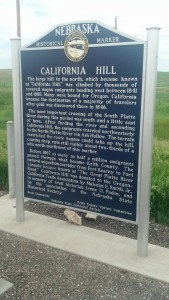
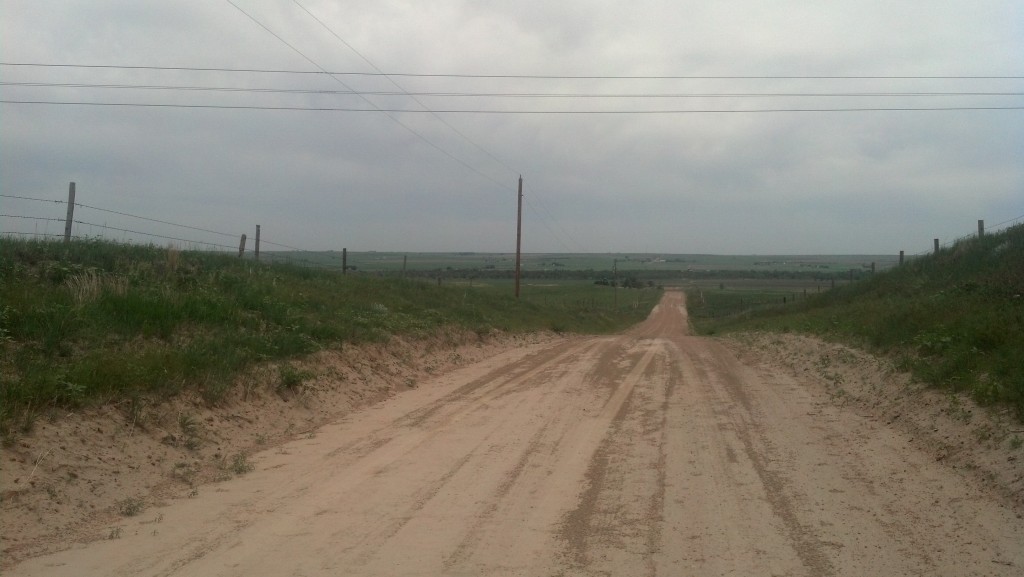
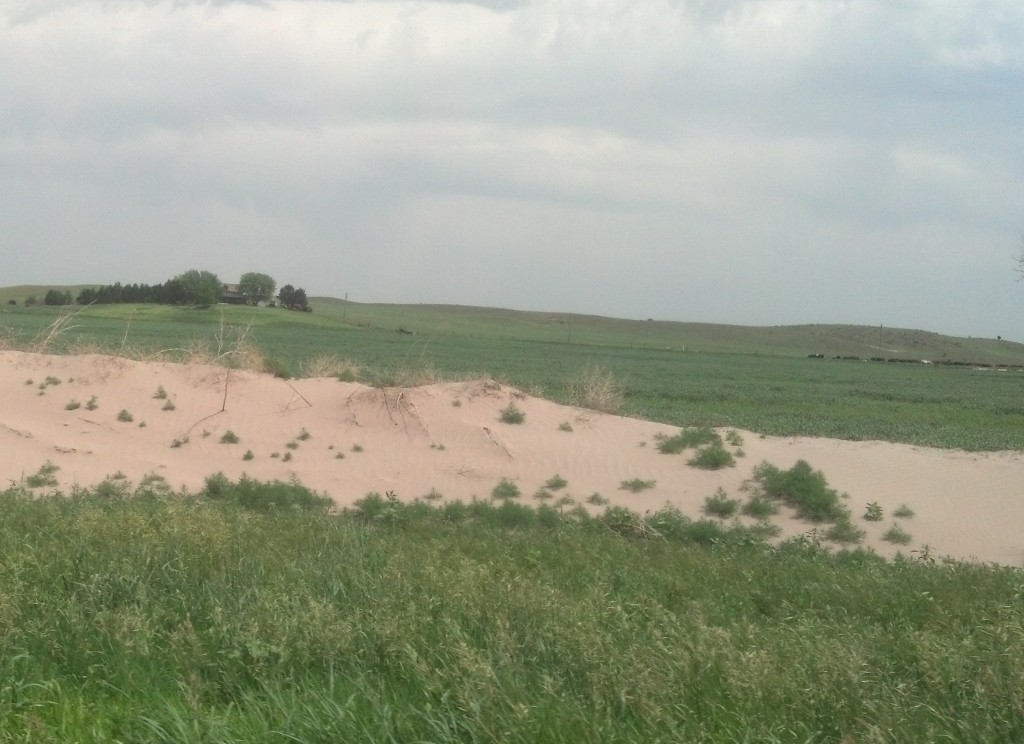
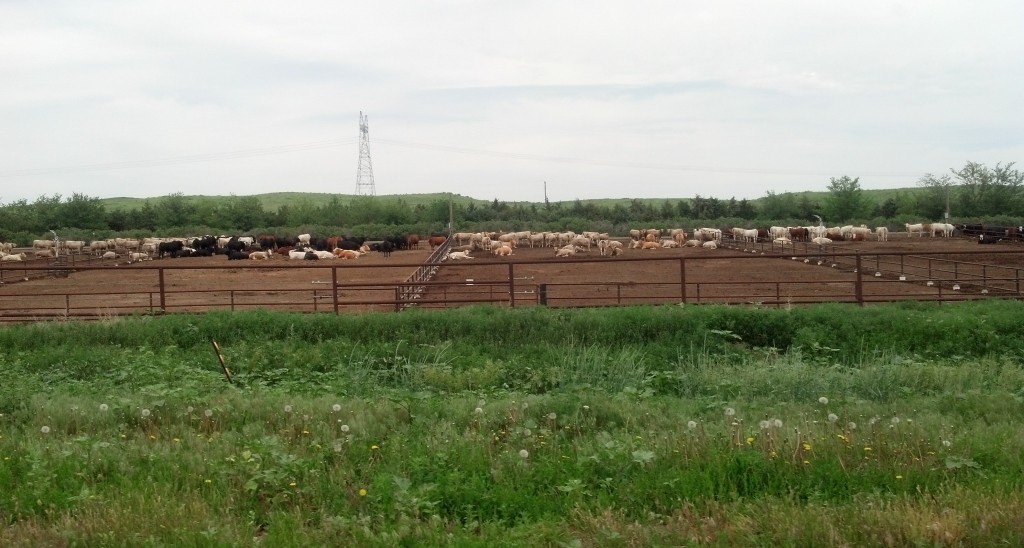
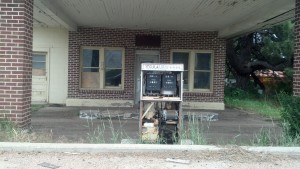

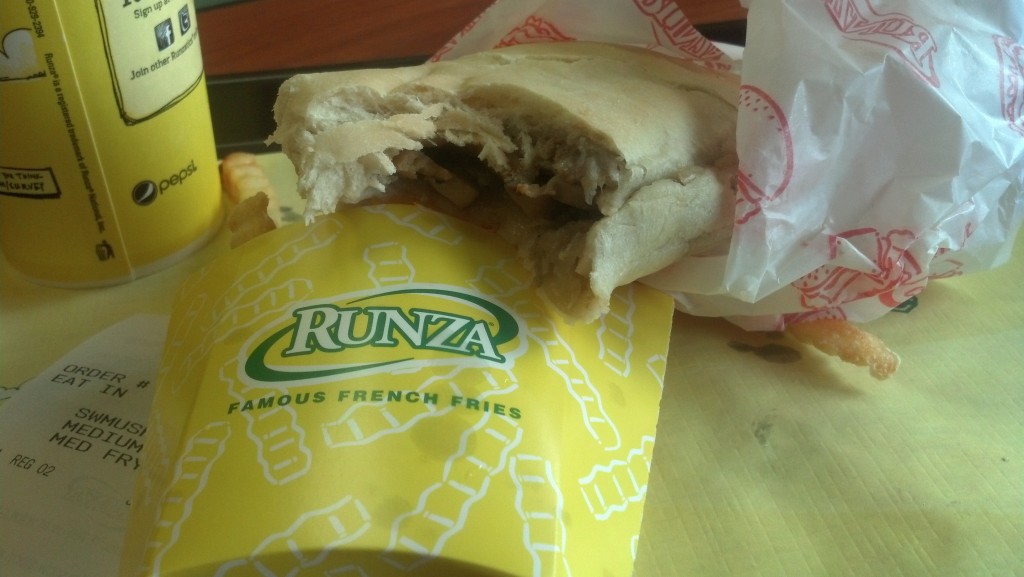
Pingback: En Route to Boulder, Traversing Northeastern Colorado | The Lincoln Highway Guide
Pingback: Unwelcome Signs in Wyoming | The Lincoln Highway Guide